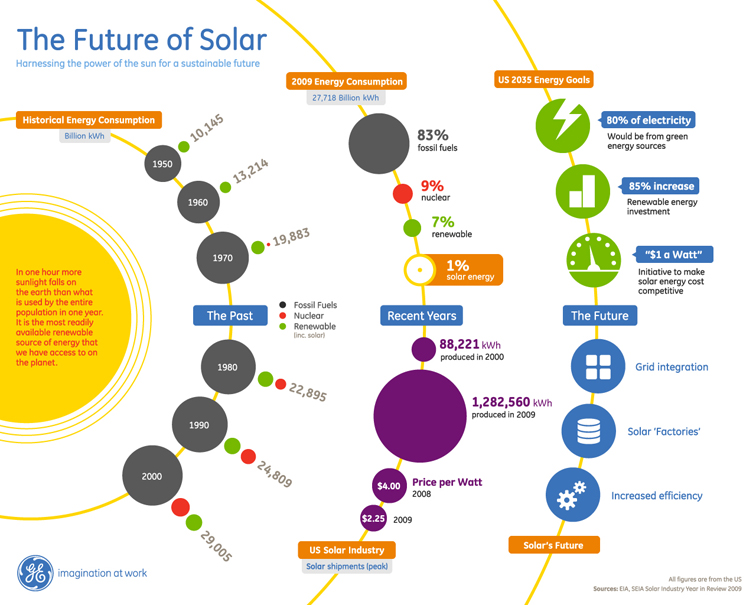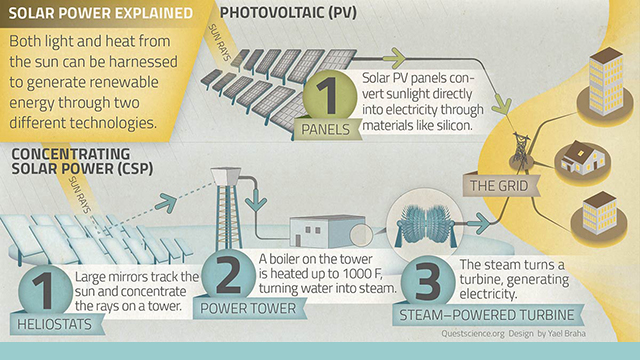Discover the secrets to maximizing solar power efficiency with these 20 expert tips guaranteed to save you money and energy.

Image courtesy of via DALL-E 3
Table of Contents
- Introduction to Solar Power
- What Are Solar Panels?
- Types of Solar Power Systems
- Why Is Solar Power ‘Sustainable’?
- Benefits of Using Solar Power
- How to Make the Most of Solar Panels
- Challenges and Limitations
- Innovations in Solar Power
- Solar Power in Action
- Getting Started with Solar Power
- Conclusion: The Future of Solar Energy
- FAQs
Introduction to Solar Power
Solar power is a type of renewable energy that comes from the sun. It is an important source of clean and sustainable energy that can help reduce our dependence on non-renewable resources like coal and oil. Solar power is harnessed using solar panels, which capture the sunlight and convert it into electricity. This form of energy is not only good for the environment but also for our wallets, as it can help lower electricity bills.
Renewable energy, like solar power, is essential for a sustainable future. By using solar energy, we can reduce carbon emissions and help combat climate change. Solar power is becoming increasingly popular around the world as more people recognize the benefits of this clean and abundant source of energy.
What Are Solar Panels?
Solar panels are devices that capture energy from the sun and convert it into electricity. They play a key role in harnessing solar power, a renewable and sustainable form of energy. Solar panels are made up of photovoltaic cells that work together to generate electricity from sunlight.
The Science Behind Solar Panels
Solar panels work through a process called the photovoltaic effect. This effect occurs when sunlight hits the photovoltaic cells, which are usually made of silicon. The sunlight’s energy excites the electrons in the silicon, causing them to flow and create an electric current. This electricity can then be used to power homes, schools, and even entire cities.
Materials Used in Solar Panels
The most common material used in solar panels is silicon. Silicon is a semiconductor that can conduct electricity when exposed to sunlight. Other materials, such as cadmium telluride and copper indium gallium selenide, are also used in some types of solar panels. These materials help enhance the efficiency and performance of the panels.
Types of Solar Power Systems
When it comes to harnessing the power of the sun, there are various types of solar power systems that serve different purposes. Let’s take a look at the two main categories of solar power systems and understand what sets them apart.

Image courtesy of jess3.com via Google Images
On-Grid vs. Off-Grid Systems
On-grid systems, also known as grid-tied systems, are connected to the traditional electricity grid. These systems allow you to generate electricity from the sun and use it in your home. Any excess electricity produced can be fed back into the grid, often earning you credits on your utility bill through a process called net metering.
On the other hand, off-grid systems operate independently of the grid. These systems are commonly used in remote locations where connecting to the grid is not feasible. Off-grid systems store excess energy in batteries for use when the sun is not shining, providing a reliable source of electricity even in off-grid locations.
Portable Solar Solutions
Portable solar solutions are great for individuals on the go who still want to have access to clean and renewable energy. These solutions include small, foldable solar panels that can be easily carried and set up wherever you may need them. Whether you’re camping, hiking, or simply spending time outdoors, portable solar panels offer a convenient way to power your devices without relying on traditional grid power.
Why Is Solar Power ‘Sustainable’?
When we talk about sustainable energy, we mean energy that can be used over and over again without running out. Solar power is considered sustainable because the sun provides us with an endless supply of energy. This is different from sources like coal or oil, which will eventually be used up.
Solar energy comes from the sun, which shines every day all around the world. As long as the sun keeps shining, we can keep using solar power to generate electricity. This makes it a reliable and sustainable source of energy.
By using solar power, we are not depleting any resources or harming the environment. Since the sun is always there, we can harness its energy without worrying about running out. This is why solar power is considered one of the most sustainable forms of energy available to us.
Benefits of Using Solar Power
In today’s world, where the focus is increasingly on sustainable and renewable sources of energy, solar power stands out as a shining example of innovation. Let’s explore some of the advantages of harnessing the power of the sun through solar energy.

Image courtesy of ecogreenlove.com via Google Images
Saving Money with Solar Energy
One of the biggest benefits of using solar power is the potential to save money on electricity bills. By generating your own electricity from the sun, you can reduce or even eliminate your reliance on traditional power sources, leading to significant savings over time.
Environmental Benefits of Solar Energy
Unlike fossil fuels that contribute to air pollution and climate change, solar energy is clean and environmentally friendly. By using solar power, you can help reduce your carbon footprint and make a positive impact on the planet.
Low Maintenance and Longevity
Solar panels require very little maintenance once installed, making them a hassle-free energy solution. With proper care, solar panels can last for decades, providing a long-term and reliable source of electricity for your home or business.
Energy Independence
By generating your own electricity with solar power, you can become more self-sufficient and less reliant on external sources of energy. This independence offers peace of mind during power outages and ensures a stable energy supply for your needs.
Overall, the benefits of using solar power extend beyond individual savings to include a positive impact on the environment and a more secure energy future for all. Embracing solar energy is not just a smart choice for today but an investment in a sustainable tomorrow.
How to Make the Most of Solar Panels
When it comes to getting the most out of your solar panels, there are a few key things to keep in mind. By positioning and maintaining your panels correctly, you can maximize their efficiency and make the most of the sun’s energy. Here are some tips to help you get started:
Proper Placement and Angles
One of the most important factors in optimizing your solar panels’ efficiency is proper placement. It’s essential to install your panels in a location where they will receive the most sunlight throughout the day. This usually means placing them on a south-facing roof or in an open area without shading from trees or buildings.
Additionally, the angle at which your panels are installed can impact how much sunlight they can capture. In general, panels are most effective when they are tilted at an angle that is equal to the latitude of your location. However, for optimal efficiency, it’s best to consult with a professional to determine the best angle for your specific situation.
Routine Care and Maintenance
Ensuring that your solar panels are well-maintained is crucial for their long-term efficiency. While solar panels are generally low maintenance, there are a few simple tasks you can do to keep them working at their best:
Regularly clean your panels to remove any dirt, dust, or debris that may accumulate on them. This can be done with a soft brush or a mild detergent and water solution. Keeping your panels clean will help them absorb more sunlight and generate more electricity.
Inspect your panels regularly for any signs of wear or damage. If you notice any cracks, breaks, or other issues, it’s important to address them promptly to prevent further damage.
Lastly, be sure to monitor your panels’ performance regularly. Most solar panel systems come with monitoring tools that allow you to track how much energy your panels are producing. By keeping an eye on this data, you can quickly identify any issues and address them before they impact your system’s efficiency.
Challenges and Limitations
While solar power is a fantastic source of renewable energy, there are challenges and limitations that come with using this technology. Let’s explore some of the difficulties that may arise when harnessing the power of the sun.

Image courtesy of www.sunpowerbythesolarquote.com via Google Images
Weather Dependency
One of the biggest challenges of solar power is its dependency on weather conditions. Solar panels require sunlight to generate electricity, so they are less effective on cloudy days or during periods of inclement weather. This means that solar power may not always be a reliable source of energy, especially in regions with frequent cloud cover or long periods of darkness.
Energy Storage
Another limitation of solar power is the need for effective energy storage solutions. While solar panels can generate electricity during the day, this energy must be stored for use during times when the sun is not shining, such as at night. Current battery technology for storing solar energy can be expensive and bulky, which presents a challenge for widespread adoption of solar power systems.
| Aspects | Efficiency Level |
|---|---|
| Solar Panel Type | Monocrystalline |
| Solar Panel Efficiency | Up to 22% |
| Inverter Efficiency | 95% |
| Tilt Angle | Optimal at 30-40 degrees |
| Shade | Minimal to no shade |
Despite these challenges, advancements in technology and ongoing research are working to overcome these limitations. By improving energy storage capabilities and increasing the efficiency of solar panels, we can continue to harness the power of the sun in a more reliable and sustainable way.
Innovations in Solar Power
As the demand for renewable energy sources continues to grow, scientists and engineers are constantly working on innovations to make solar power more efficient and accessible. Let’s take a look at some of the latest developments in solar technology that are shaping the future of sustainable energy.
High-Efficiency Solar Panels
One of the most exciting advancements in solar power is the development of high-efficiency solar panels. These panels are designed to capture more sunlight and convert it into electricity at a faster rate than traditional panels. By using new materials and advanced manufacturing techniques, high-efficiency solar panels are revolutionizing the way we harness solar energy.
Smart Solar Systems
Another innovative technology in the field of solar power is the integration of smart systems. These systems use sophisticated sensors and software to optimize the performance of solar panels. By constantly monitoring sunlight levels and adjusting panel angles, smart solar systems can maximize energy production throughout the day. This technology not only increases efficiency but also makes solar power more reliable and cost-effective.
Solar Power in Action
Solar power is being embraced worldwide as a reliable and sustainable source of energy. Let’s explore how this renewable energy is being utilized in various settings like homes, schools, and businesses.

Image courtesy of www.kqed.org via Google Images
Residential Solar Panels
Many homeowners are opting to install solar panels on their rooftops to generate clean and efficient energy for their households. These panels capture sunlight and convert it into electricity, reducing reliance on traditional power sources.
Solar Energy in Schools
Schools are also joining the solar wave by installing panels on their buildings. This not only helps save on electricity costs but also serves as an educational tool for students to learn about sustainability and renewable energy.
Solar Power for Businesses
Businesses are incorporating solar power systems to reduce their carbon footprint and operating costs. By harnessing the sun’s energy, companies can power their operations sustainably while contributing to a cleaner environment.
By implementing solar power in these diverse settings, individuals and organizations are taking proactive steps towards a greener future powered by renewable energy sources.
Getting Started with Solar Power
If you’re thinking about harnessing the power of the sun with solar panels, you’re on the right track to a more sustainable future. Solar power is a fantastic form of renewable energy that can help you save money on electricity bills and reduce your carbon footprint. Let’s explore how you can get started with solar power!
Choosing the Right System
When deciding to go solar, the first step is to choose the right solar power system for your needs. There are two main types to consider:
On-Grid vs. Off-Grid Systems
On-grid systems are connected to the electricity grid, allowing you to both use solar energy and draw power from the grid when needed. Off-grid systems, on the other hand, operate independently and are great for remote locations or areas with unreliable grid supply.
Portable Solar Solutions
Portable solar panels are a versatile option for those who want to harness solar power on the go. They are lightweight, easy to carry, and perfect for camping trips, RVs, or boating adventures.
By choosing the right system for your lifestyle, you can maximize the benefits of solar power and enjoy clean, sustainable energy wherever you go.
Conclusion: The Future of Solar Energy
As we’ve learned, solar power is a crucial form of renewable energy that holds immense potential for the future. The sun’s rays provide us with a vast and sustainable source of power that can help reduce our dependence on non-renewable resources. The advancements in solar technology continue to make it more efficient and accessible to a wider audience.

Image courtesy of cleantechnica.com via Google Images
Looking ahead, the future of solar energy appears bright. With ongoing research and development, we can expect even higher efficiency levels in solar panels. This means more energy can be captured from the sun, leading to increased adoption of solar power systems in homes, schools, and businesses.
Furthermore, as concerns about climate change and environmental sustainability grow, the demand for sustainable energy sources like solar power will continue to rise. Governments and organizations around the world are investing in solar energy projects to create a cleaner and greener future for generations to come.
In conclusion, the future of solar energy looks promising. By harnessing the power of the sun through solar panels and innovative technologies, we can pave the way for a more sustainable and eco-friendly world. Embracing solar power is not only beneficial for the planet but also for individuals looking to reduce their carbon footprint and energy costs. So, let’s keep shining bright with solar energy!
FAQs
Is solar power expensive?
Solar power may have a higher initial cost for purchasing and installing solar panels, but in the long run, it can save money on electricity bills. The savings from generating your own power can offset the initial investment over time, making it a cost-effective choice for sustainable energy.
Can solar panels work on cloudy days?
While solar panels are most efficient on sunny days, they are still able to generate electricity on cloudy days. The panels can still capture light, even through clouds, although the energy production may not be as high as on clear, sunny days.
How long do solar panels last?
Solar panels are built to be durable and long-lasting. Most solar panels come with a warranty of 25 years, but they can continue producing electricity for much longer, potentially up to 30-40 years with proper maintenance.
What happens to solar power at night?
Since solar panels require sunlight to generate electricity, they do not produce power at night when the sun is not shining. However, you can still have electricity during the night by connecting your solar power system to the grid or using batteries to store excess energy generated during the day for use at night.




